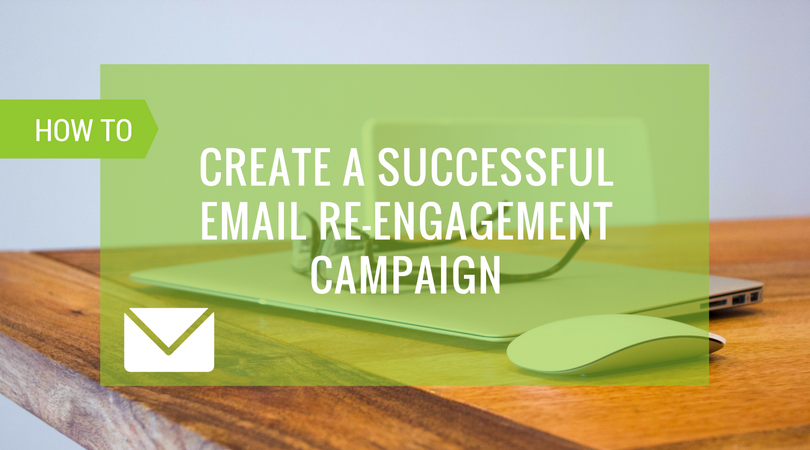
Let’s say you have an email list of exactly one thousand contacts. You have worked hard to collect these contacts, creating valuable content offers, engaging your social media followers, and blogging twice a week to provide visitors with useful information. You’re proud of your list, and you’ve been nurturing your contacts consistently to turn them into loyal customers. But lately, you’ve realized that almost one-fourth of your contacts are no longer opening your emails.
What do you do? What does this mean? Why does the world hate you?! Deep breaths, my friend, deep breaths. Email marketing databases naturally degrade by about 22.5% every year. So losing a few contacts is a given. However, while you may lose some contacts simply due to people switching emails, some of your inactive leads are probably still interested in receiving your emails – you just might need to remind them of why.
{Enter Email Re-engagement campaign}
Since you clicked on this post, I’m going to assume that you know what an email re-engagement campaign is, but you might not know why you need one (besides the fact that you have leads who aren’t opening your literally life-changing emails). So I’m going to go through a little “why, who, how”. Just skip to the “how” if you know the “why and who”.
There’s an Abbott and Costello joke in there somewhere…
Let’s jump right in…
Why?
As I said, you’re going to see some serious decay in your email list year over year, so along with generating new, quality leads, you’re going to want to retain as many leads as possible. In addition to helping you recapture inactive leads, a re-engagement campaign can be used to:
- Identify contacts that truly do not wish to be contacted
- Give said contacts an easy way to opt out of receiving your emails
- Provide you with more accurate data from your email campaigns (with uninterested leads in your email lists, your emails will perform worse, regardless of how well done they are).
Who?
The “who” on this one should be pretty obvious. You should attempt to reengage contacts who are unengaged. The definition of unengaged varies by industry, but if a contact hasn’t opened your last five emails, it is probably safe to say that they aren’t that engaged with your company.
NOTE – Be sure that you aren’t attempting to engage contacts who have previously opted out of receiving your emails.
How?
The “how” of a re-engagement campaign will somewhat depend on what you’re trying to accomplish. If your goal is to get old contacts back onto your e-commerce site, your campaign will look drastically different from someone whose goal is to clean out uninterested contacts from their database.
At the end of the day, however, it’s all about getting back in touch with your contacts and getting them interested in your organization again (and I mean, they were at some point or else they wouldn’t be a contact). Now that you have an idea of what direction your email campaign should take, here are a few things you can focus on to make sure your email re-engagement campaign is awesome!
Subject Lines
Subject lines are important for any email campaign, but that goes double for a re-engagement campaign. If a contact hasn’t opened your last 5 emails, why should they open this one?
Well, there is a pretty high percentage that they won’t unless you have a subject line that is so appealing your recipients are clicking it before they have a chance to tell their hands to stop.
A few good ways to improve your subject lines are :
- Use Humor
- Use personalization
- Show Your Personality
- Use Actionable Language
- Use emojis
- Be informative
Email Content
The next thing you need to worry about is your email content. Once your recipients open your email, you need to make sure they stick around long enough to appreciate what you have to say.
In a re-engagement campaign, your content should be short, sweet, and to the point. Let your recipients know why you’re reaching out to them, why they should interact with you, and highlight what is in it for them every chance you get.
Make sure that the campaign has a common thread that ties all of the emails together. That thread could be anything from a simple “hey, we’ve missed you” to a coupon offering a percent off their next order. But keep in mind that if an email asks the reader to do too many things or sends too many different messages, it can be distracting and overwhelming. They might delete the email before taking any action at all, putting them right back into the unengaged category.
Email Design
Your design needs to grab the eye of the reader make them interested in it from the second they open it, strike a balance between images, text and white space. Consider making your email very image focused, let the images tell the story. The text that you do include should be laid out in a way that is easy to read and digest, one way to do this is by including bulleted lists, people love those.
It is crucial that your email design is optimized for use on mobile devices since this is how more than half of all emails are viewed.
So, another key aspect of an email re-engagement campaign is timing? When are your emails going to be sent? How many are you going to send? Is this campaign going to overlap with any other email campaigns and workflows that you have in play? If you need help answering these questions, consider partnering with MINDSCAPE for your email marketing. You can click here to learn about our services.




